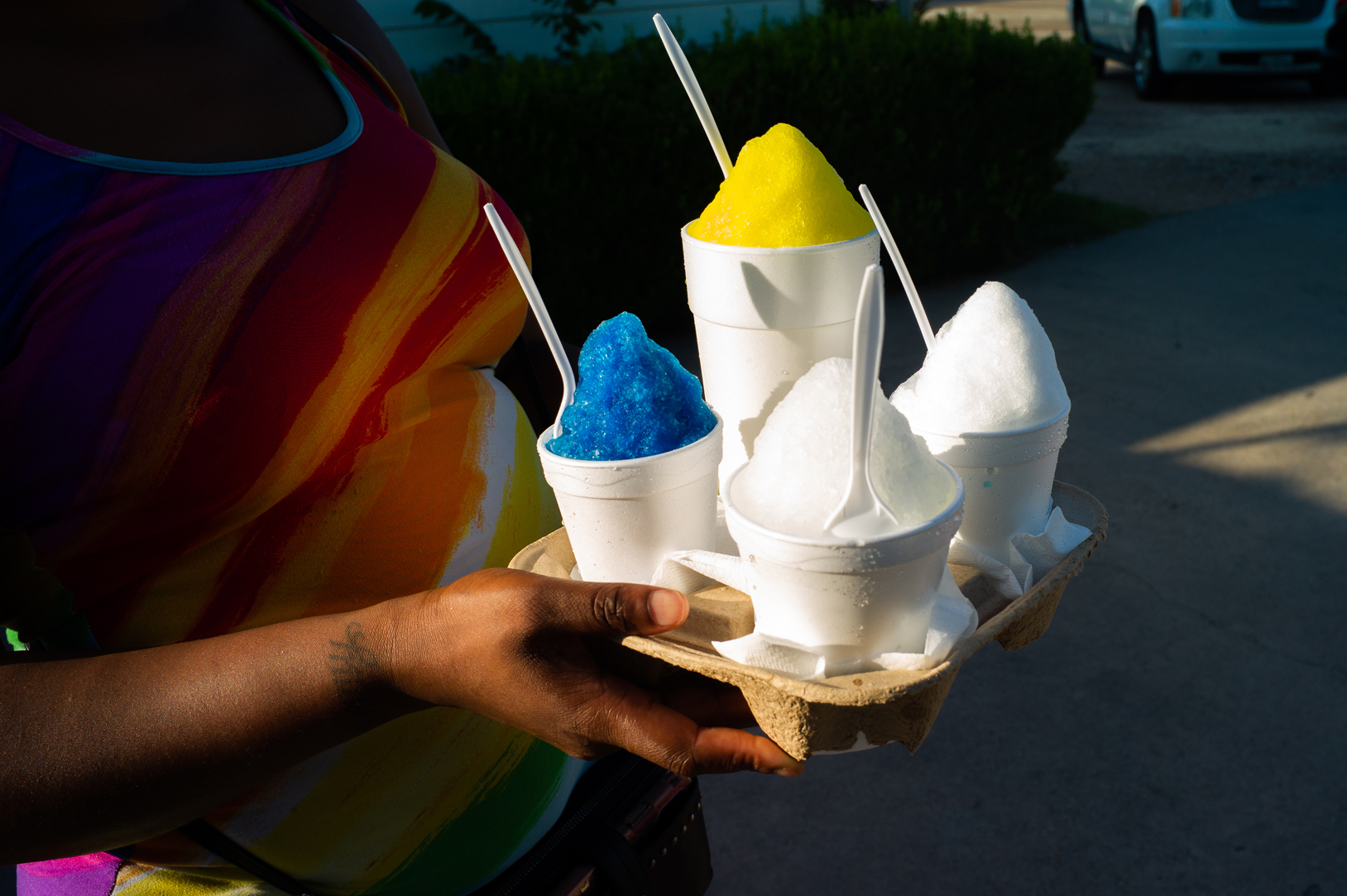|
Getting your Trinity Audio player ready...
|
The sweltering heat during summer break will impact everyone across the Greater Houston region, from people waiting in the sun for public transportation to those who work outdoors to those without air conditioning.
Anyone can be at risk in high heat and humidity, said Porfirio Villarreal, public information officer with the Houston Health Department. With temperatures potentially reaching highs of 100 degrees this week, local officials announced Monday that members of the public can cool off in community centers across Houston and Harris County.
As summer break begins and temperatures rise, here are tips on how people can protect themselves and their pets during the punishing Texas summer.
Taking precautions to prevent heat-related illnesses
Before heading outdoors, drink plenty of water. Villarreal said there’s no exact amount that you should drink, but a glass or two beforehand can help stay hydrated. He recommends creating reminders on your phone to drink water every two to four hours to help stay hydrated.

One of the worst things people can do is drink large amounts of alcohol, caffeine or sugary beverages since they result in a loss of body fluids, he said.
Exercising and pushing yourself in the heat can lead to dizziness, weakness and heat exhaustion. People may also experience nausea, headaches and a rapid pulse. These symptoms are signs to go cool off in an air-conditioned environment. People should avoid exerting themselves outside from 11 a.m. to 5 p.m.
“You want to make sure that you leave the outdoor work or strenuous exercise for early in the morning, or late in the evening when the temperatures are not so hot. That will help,” Villarreal said.
If someone continues with heavy activity, it can progress into a heatstroke, which can cause organ damage and lead to death, Villarreal said. Heat stroke is when your body can no longer cool itself and your perspiration system fails, causing body temperatures to rise up to 106 degrees or higher within 15 minutes, he said.
If someone’s skin is no longer sweating and dry, it is time to call 911, especially if they have a headache or are confused, he said.
The elderly are vulnerable to heat stroke because it takes them twice as long to recuperate after being exposed to high temperatures compared to a younger person, Villarreal said. People who are overweight and those with heart or respiratory illnesses are also vulnerable during the summer.
READ MORE: Your guide to summer care: Here are options for entertaining the kids during break in Houston
Infants and children under the age of four are also vulnerable when playing outdoors. Caregivers need to make sure they take breaks and don’t spend long periods outside, he said.
Each summer there are reports of children or pets unattended or left in vehicles. Villarreal suggests taking off a shoe or setting aside other key items to remind yourself to check the backseat before leaving your vehicle.
“It’s a good reminder,” Villarreal said. “You need something that you need – a phone, some keys, a purse, a wallet – next to somebody who’s in the car. That way they’re not forgotten.”
The public is welcome to use any of the city’s multi-service community centers to cool down during business hours, said Fabian Gutierrez, a public information officer with the Houston Health Department. During extreme heat, the city will extend the hours. To find a multi-service center to cool off at, visit the city’s website.

Working outside in the sun
Individuals who work outdoors need to take safety precautions, especially from June through late September, Villarreal said.
“If you are working outdoors, you wear light-colored, loose fitted clothing that allows the evaporation of the perspiration,” he said. “Your sweat is what cools you down and it helps you regulate your body temperature, so that helps.”
Wear sunscreen and a wide-brim hat to prevent sunburns. Try to take frequent breaks in an air-conditioned building to cool down.
For outdoor or warehouse workers, the Coalition for Environment, Equity, and Resilience (CEER) recommends that people use a buddy system and look out for each other in case a heat emergency occurs.
“Remember that delivery drivers and mail people are at a very high risk of heat stress and heat exhaustion,” stated a 2023 Heat Stress Report from CEER. “Check in with the people delivering your mail and packages, offer them water, and if they seem to be overheated, provide them with shade or AC so that they can cool off.”
Gabe Cazares, executive director for LINK Houston, which advocates for an equitable transportation system, said transit riders waiting outdoors for public transit can also be at risk.
“Transit riders are at the frontlines of the heat and climate crisis,” he said at a news conference on May 26. “Too many METRO stops lack shade or shelters. Which means on our hottest days, every minute waiting for the bus is a minute exposed to the elements.”
CEER recommends that METRO riders carry a water bottle with ice-cold water. Riders should wear a visor or hat to shade their face and bring a battery-powered fan or paper fan to cool themselves down.
Protecting your pets during the summer
Pet owners can usually tell if their pets will be hot outside, said Dr. Roberta Westbrook, chief veterinarian for the Houston Society for the Prevention of Cruelty to Animals.
“If you're hot outside, your pet is definitely hot outside, especially with their fur coats,” Westbrook said.
For people who like to be outdoors and take their pets with them, this will be the time to adjust their schedule.
She recommends going outside during the early hours of the day before the sun comes out or the early hours of the evening when the sun is not as hot.
“So paying attention to the weather and when the sun is going to rise, when the sun is going to set. That’s going to be key so that you’re not running in the heat of the day,” she said.
Before heading out, she recommends people do the “concrete test” if they decide to take their dog running with them. Concrete during the summer can burn a dog's foot pads if they’re in contact with the surface for long periods.
“Use your own hand as a test, kind of like you would when you're touching the iron or the stove, you're trying to determine whether it's hot in the same way,” Westbrook said. “You can take your hand and you can put it on the concrete. If you cannot hold your hand on the concrete comfortably for five seconds, then it is probably too hot for your dog to be running.”
Purchasing booties for your pet’s feet can also prevent foot pad burns.
Taking shorter walks, resting in shaded areas and always having water available for your pet will help, Westbrook said. She recommends keeping walks to under 15 minutes at a time.
Although not life-threatening, parasites, ticks and fleas are at their highest during the summer months and can carry diseases, she said.
The most life-threatening heat illness for pets is a heat stroke. Symptoms include excessive panting, which can sometimes cause the tongue to hang further out of the mouth than normal or curl up. Their tongue could also turn bright red rather than a calm pink color. Other signs can include pets looking more tired than normal or not wanting to pick up their heads.
Westbrook recommends moving pets into a cool car or an air-conditioned area and giving them small amounts of cool water every five to 10 minutes. If that does not help, take a cool washcloth and wipe them down, especially in areas where their body does not have a lot of fur such as their abdomen, armpits and groin areas.
Things to avoid would include putting them in ice water or wiping them down with ice, she said.
“You don't want to try to cool their body off too quickly, and sometimes that very, very cold temperature can actually cause more damage, so you want to do it slowly,” Westbrook said.
In advanced stages, pets may experience vomiting, diarrhea or disorientation. Their vomit or diarrhea may have blood. If you notice these symptoms, take them to a veterinarian right away.
Additionally, she said not to leave pets in the car at all, even with a window cracked. If you have outdoor pets, be sure they have areas with shade and access to water. Sometimes, water left outside can become extremely hot.


